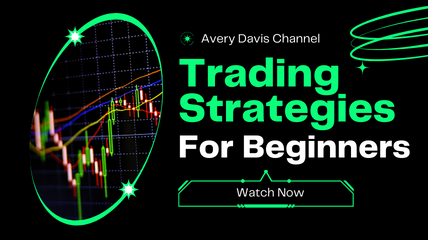Blog Details
Binary Options Trading Glossary: Key Terms Explained

Binary Options Trading Glossary: Key Terms Explained
Binary options trading involves a unique set of terms and concepts that traders need to understand to navigate the markets effectively. This glossary provides explanations for key terms commonly used in binary options trading, helping traders familiarize themselves with the terminology and concepts.
1. Binary Options
Definition: Binary options are financial derivatives that allow traders to speculate on the price movement of underlying assets within a specified time frame. Traders predict whether the price of an asset will rise or fall by the expiry time, with fixed payouts for correct predictions.
2. Call Option
Definition: A call option is a type of binary option that gives the trader the right, but not the obligation, to buy the underlying asset at a predetermined price (strike price) within a specified time frame. Call options are used when traders anticipate a rise in the price of the underlying asset.
3. Put Option
Definition: A put option is a type of binary option that gives the trader the right, but not the obligation, to sell the underlying asset at a predetermined price (strike price) within a specified time frame. Put options are used when traders anticipate a fall in the price of the underlying asset.
4. Expiry Time
Definition: The expiry time is the predetermined time at which a binary option contract expires. Traders must predict whether the price of the underlying asset will be above or below the strike price at expiry to determine the outcome of the trade.
5. Strike Price
Definition: The strike price is the predetermined price at which the option holder can buy (in the case of a call option) or sell (in the case of a put option) the underlying asset if the option is exercised. The strike price is fixed at the time of option purchase and remains constant until expiry.
6. In-the-Money (ITM)
Definition: An option is considered in-the-money (ITM) if it would result in a profit for the holder if exercised immediately. For call options, ITM refers to the strike price being below the current market price, while for put options, ITM refers to the strike price being above the current market price.
7. Out-of-the-Money (OTM)
Definition: An option is considered out-of-the-money (OTM) if it would result in a loss for the holder if exercised immediately. For call options, OTM refers to the strike price being above the current market price, while for put options, OTM refers to the strike price being below the current market price.
8. At-the-Money (ATM)
Definition: An option is considered at-the-money (ATM) if the strike price is equal to the current market price of the underlying asset. In such cases, the option's intrinsic value is zero, and its outcome depends solely on whether the price moves above or below the strike price by expiry.
9. Risk-Reward Ratio
Definition: The risk-reward ratio is a measure used by traders to assess the potential return relative to the amount of risk taken on a trade. It is calculated by dividing the potential reward (profit) by the potential risk (loss) of the trade. A higher risk-reward ratio indicates a potentially more favorable trade opportunity.
10. Payout
Definition: The payout is the fixed amount of money that a trader receives if their binary option expires in-the-money. Payouts are predetermined at the time of option purchase and vary depending on the broker and the specific option contract.
Conclusion
Understanding key terms and concepts in binary options trading is essential for traders to make informed decisions and navigate the markets effectively. By familiarizing themselves with this glossary, traders can enhance their understanding of binary options terminology and improve their trading proficiency.
References:
Investopedia: Binary Option
Binary Options.net: Binary Options Glossary









